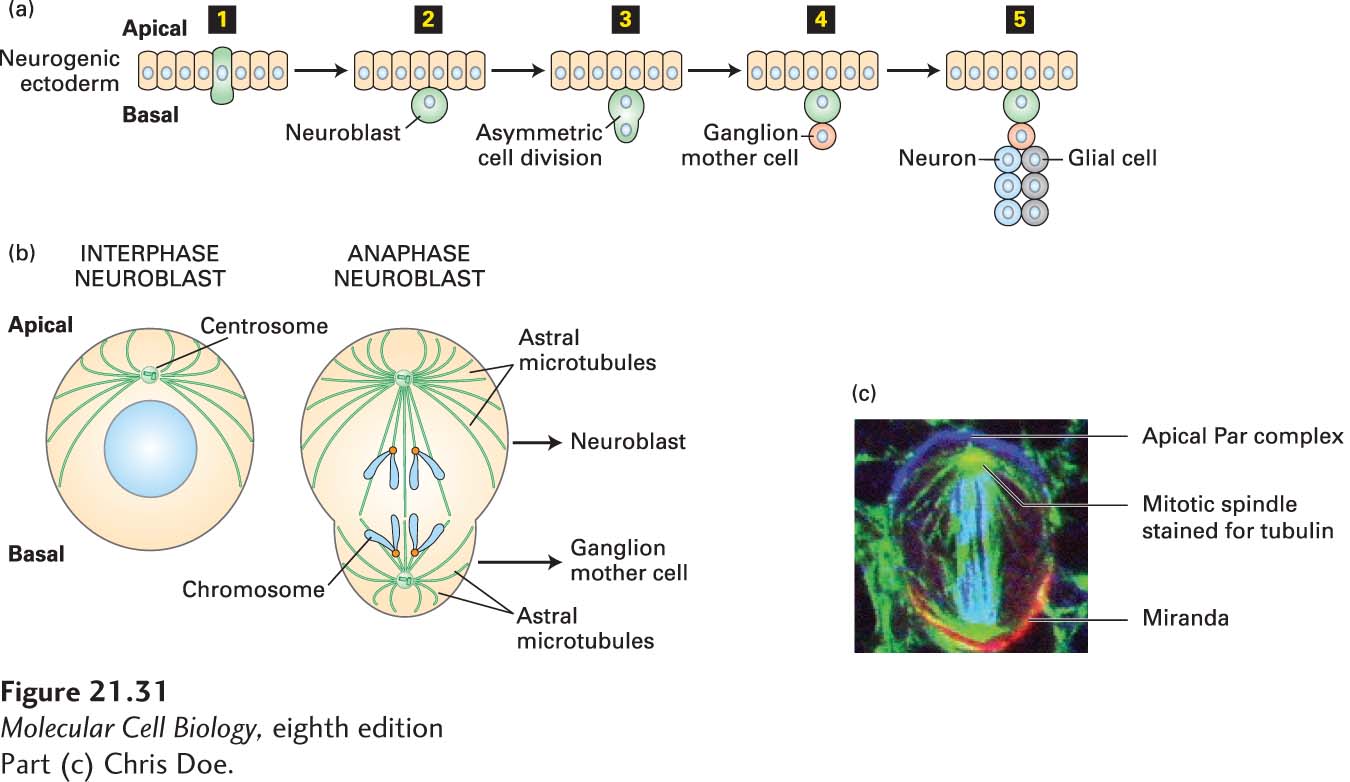
FIGURE 21- 31 Neuroblasts divide asymmetrically to generate neurons and glial cells in the central nervous system. (a) Neuroblasts, which are stem cells, originate from the neurogenic ectoderm by means of signals that induce them to enlarge (step 1). They then move basally out of the ectoderm, but remain in contact with it (step 2). Neuroblasts then undergo an asymmetric division (step 3) that produces a neuroblast and a ganglion mother cell (GMC) (step 4). The GMC then divides once to give two neurons or glial cells (step 5). Meanwhile, the neuroblast can divide many times to produce more GMCs and so populates the neural tissue. (b) The asymmetric division of the neuroblast requires the correct orientation of the mitotic spindle to give rise to a larger neuroblast and a smaller GMC. (c) A neuroblast at anaphase, showing the segregation of the apical Par proteins (blue) and the basal Miranda protein (red).
[Part (c) Chris Doe.]
[Leave] [Close]